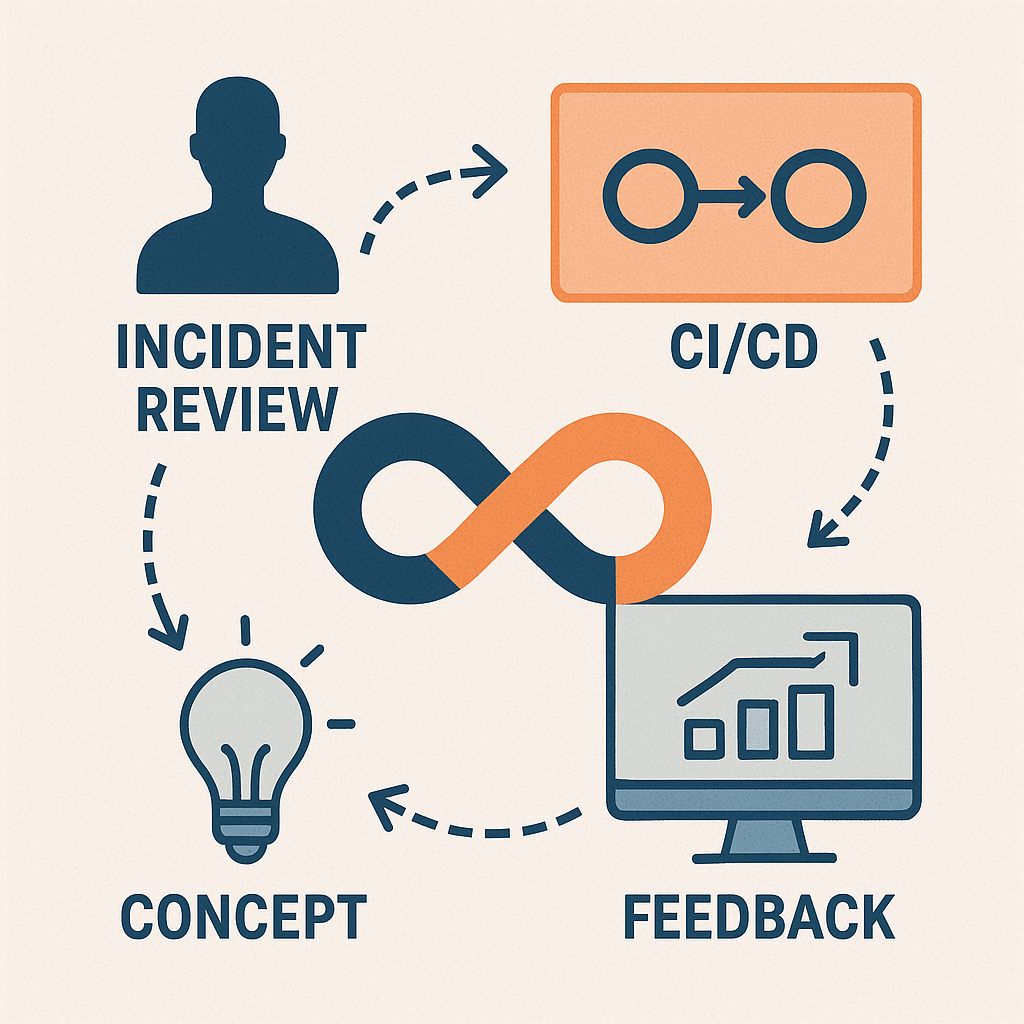DevOps has traditionally been seen as a technical practice — for engineers, Devops, SREs and infrastructure teams. This is where automation shines, pipes flow and deployments happen at a lightning speed However, as the evolution to continuous software delivery increases in complexity and customer demand heightens, product managers no longer can dismiss DevOps as someone else’s problem. Indeed, having an understanding of DevOps is becoming a market need for product leaders who wish to GTM faster with smarter/safer/more resilient solutions.
DevOps is essentially all about silo smashing. Traditionally, it implies functioning between development and operations. The true superpower of DevOps is its capacity to continue everything along the product lifecycle, from concept to production, and from measurable information back through adaptation. Product managers who consume DevOps practices get to see how their features flow from the backlog to production, hear and read what systems sound like under load, feel in real time the feedback that a customer might have right after using their product.

It is not just a technical advantage, but a strategic one as well. Having a reasonable idea of how your team deploys code, handles incidents, and what telemetry is available can significantly impact where you rank the work, communicate risk and align stakeholders around the same. For instance, whether a feature can be phased in with feature flags may alter your messaging from customers or how you coordinate its launch. Participating in post-incident reviews teaches you to map technical failures to corresponding business impacts — and opposite. After all, relying only on gut feelings or anecdotes is limiting — the power of real-time data such as latency, error rates and usage spikes lets you make educated decisions which are not just based on intuition.
Naturally, product managers do not need to transition into DevOps engineers. Being DevOps-literate doesn’t require writing YAML or debugging a Kubernetes cluster. However, you should know the practices of how we build and ship software today: CI (Continuous Integration), automated testing, IaC (Infrastructure as Code), and observability but also shared problem ownership. Only part of the program is engineering; this is product problems, not just engineering ones. The reason being, they have a direct impact on how fast you can ship, how confident you can scale and how efficiently your system responds to change.
Culture is the main thing behind DevOps. This is more about sharing, honesty, and getting better. Culture is made by all — not just code writers. A big part of that culture is the responsibility of product managers to promote cross-functional ownership, business and technical alignment, and retrospectives with impact. PMs who talk like DevOps build trust and can have a significant impact on architectural decisions. This trust results in more productive roadmaps, higher levels of alignment, and products that are both innovative as well as being reliable and high quality.
Transparently, DevOps is no longer optional in a world where downtime can cost millions and time to market can be the difference between launch success and failure. It is not only geared towards engineers. Product managers who really get DevOps and understand the principles become the epicenter of quality, speed, and customer happiness. I do remember, just features that deliver value.
If you are a product leader, this is the time for you to step into that conversation. Ask about the deployment pipeline. Attend the Review of the Incident Learn the metrics that matter. Because DevOps is the way we not just build, but the way we lead.
